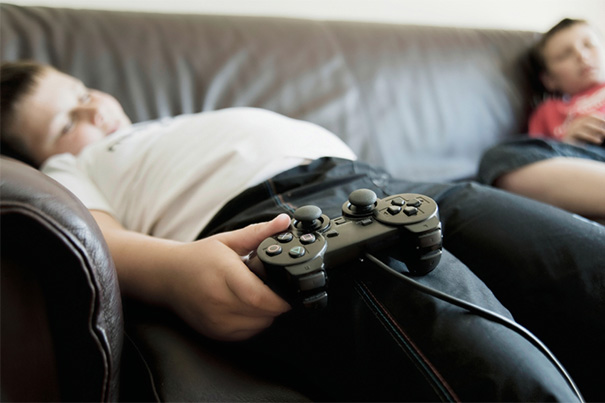
In two-child families, having an obese sibling was associated with risk that was more than five times greater than if the sibling were not obese. The risk increased if the siblings were the same gender — 8.6 times greater for girls and 11.4 times greater for boys.
Image: iStock
Obesity risk stronger among siblings
Siblings may have a greater influence than parents on a child’s obesity risk
While it is well known that a child’s risk of obesity is greater if he or she has obese family members, whether the type of relationship affects that risk has not been given as much attention.
A new report led by an investigator at the Mongan Institute for Health Policy at Harvard-affiliated Massachusetts General Hospital finds that the risk associated with having an obese sibling is more than twice as great as that of having an obese parent, and that risk is even stronger among siblings of the same gender. The study will appear in the October issue of the American Journal of Preventive Medicine (AJPM) and has been released online.
‘I went into this study expecting that, given parents’ oversized roles in their children’s lives, parental obesity would have a stronger association than a sibling’s obesity; but I was wrong.’ — Mark Pachucki
“It’s well known that diet and physical activity are key determinants of obesity among both adults and children; and prior research has shown that parents have a direct impact on children’s eating habits through shopping and preparing meals and on their exercise by encouraging and facilitating access to activities,” said Mark Pachucki of the Mongan Institute, corresponding author of the AJPM paper and an instructor in pediatrics at Harvard Medical School. “I went into this study expecting that, given parents’ oversized roles in their children’s lives, parental obesity would have a stronger association than a sibling’s obesity; but I was wrong.”
The paper describes a substudy of the larger Family Health Habits Survey, a nationwide survey of parents that investigated associations between the health of family members and factors such as food purchases and nutrient intake. Of the more than 10,000 participants in the larger survey, almost 2,000 respondents represented families with either one or two children and provided height and weight information for parents and children, making them eligible for the current study. The investigators analyzed information about the adults’ socio-economic status, demographic background, and overall health, along with information about the levels of physical activity of both parent and child, and aspects of their food environment.
In families with only one child, an obese parent more than doubled the risk of the child’s obesity, although that risk was reduced if high levels of physical activity were reported for the child. In two-child families, having an obese sibling was associated with risk that was more than five times greater than if the sibling were not obese. While the impact of parental obesity on an older sibling was the same as on an only child — approximately twice the risk — among younger siblings there was no association with parental obesity.
In addition, if the two children in a family were of the same gender, the older sibling’s obesity had an even stronger association with obesity in the younger sibling — 8.6 times greater for girls and 11.4 times greater for boys. Of the other demographic, socioeconomic, and behavioral factors analyzed, including the number of fast-food meals consumed weekly, the only one that significantly changed the impact of a sibling’s obesity was the level of physical activity.
“Younger children look up to their big brother or sister for behavioral cues, often seeking their approval; and siblings may spend more time with each other than with their parents, often eating and playing sports together,” said Pachucki, who is also a member of the division of general academic pediatrics at MassGeneral Hospital for Children. “While this study doesn’t allow us to say that one sibling’s obesity directly influences the other’s, the associations we found are pretty interesting. Now we need to try and replicate these analyses with other national datasets and think through how to use this information to improve family based health intervention models.”
Co-authors of the AJPM report are Michael F. Lovenheim, Cornell University, and Matthew Harding, Duke University. The study was funded by a grant from the Robert Wood Johnson Foundation (RWJF) Healthy Eating Research program, and through Pachucki’s prior fellowship as an RWJF Health and Society Scholar at the University of California, San Francisco, and the University of California, Berkeley.





